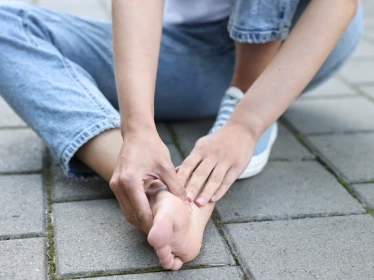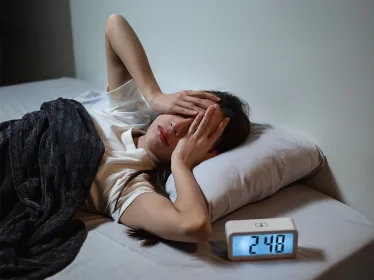儿童胃肠炎及处理方法

胃肠炎(胃部感染)指的是肠道感染,伴有腹泻(频繁排出稀或水样便)。感染通常伴有呕吐,通常持续6至24小时。腹泻通常持续2-4天。偶尔可能持续10-14天。本文回答了您可能对孩子呕吐或腹泻的一些常见问题。
您孩子呕吐和腹泻的原因是什么?它们是严重问题吗?
许多类型的疾病和药物都可能导致您孩子呕吐或腹泻。最常见的情况是,呕吐和腹泻是由一种叫做病毒的微生物引起的。呕吐和腹泻是身体排除感染或告诉我们有问题的方式。病毒感染通常较轻,不会持续超过1周。如果孩子得到充分休息、液体和良好食物,他或她应该会好转。但在某些情况下,孩子的疾病可能会变得严重。这可能是因为呕吐和腹泻会带走孩子体内的水分和盐分。如果孩子不通过饮用适当的液体来补充水分和盐分,他或她可能会脱水。这称为脱水,如果您的孩子是婴儿或非常年幼,则可能会非常严重。
药物有帮助吗?
使用药物来止吐或止泻可能会对您的孩子造成伤害。不要给孩子服用以下类型的药物:
- 您可以在药店随意购买的药物(例如,格拉沃尔、止泻灵和凯奥佩克特)。
- 为其他人开具或开处方的药物。
- 为孩子之前患过的疾病开具的药物。
大多数引起呕吐和腹泻的疾病孩子不需要抗生素。 (抗生素是用来对抗某些感染的药物。)抗生素不能治愈病毒。
何时应该带孩子去看医生?
如果您的孩子出现严重呕吐或腹泻的警告信号,应该立即带孩子去看医生。不同的孩子可能有不同的警告信号。密切关注您的孩子。注意您认为孩子行为上有所不同的事情。
如果您的孩子出现以下任何警告信号,请立即就医:
- 不愿意喝水
- 哭泣时没有眼泪
- 连续呕吐4至6个小时以上
- 眼睛凹陷
- 一天内出现6次以上大量水样腹泻
- 严重且持续的腹痛
- 一天内尿布不足5次
- 呼吸急促
- 皮肤、口腔和舌头干燥
- 非常昏睡或非常烦躁
- 皮肤发凉或呈灰色
- 严重头痛或颈部疼痛
- 呕吐物呈绿色
- 呕吐物或腹泻中带有血液
- 抱膝腹痛并哭泣
- 超过12小时体温超过39°C或102.2°F
- 凹陷的前囟(如果您的孩子不到18个月)

如何照顾您的孩子?
当您的孩子出现呕吐或腹泻时,提供正确的护理对他们的康复至关重要。 使用口服补液疗法来管理和补充水分。此外,提供健康食物可以帮助支持他们的康复过程。
补液
给您的孩子一种特殊的液体,称为口服电解质溶液,以预防严重脱水。脱水发生在您的孩子体内失去水分和盐分过多时。在头6小时内,确保您的孩子至少获得适合其年龄的正确量。
什么是口服电解质溶液?
口服电解质溶液是一种液体,含有恰到好处的水、糖和盐。您可以在大多数药店以不同形式购买这种溶液:
- 饮料,如Pedialyte、Repalyte或Hydralyte
- 粉末,必须与水混合,如口服补液盐
警告:您必须按照包装上的说明精确混合粉末。这意味着您必须使用计量勺和计量杯来测量粉末和液体。不遵循这些说明可能会伤害您的孩子。
给孩子喂多少?
- 对于不到6个月的婴儿:每小时给予60至90毫升(12至18茶匙)。
- 对于6个月至2岁的儿童:每小时提供90至125毫升(18至25茶匙)。
- 对于2岁或以上的儿童:每小时提供125至250毫升(4至8盎司)。
如果您在母乳喂养,请继续母乳喂养,但提供更短、更频繁的喂养。母乳仍然是您的孩子最好的液体。如果您的孩子呕吐,使用茶匙或注射器每1至5分钟给予5毫升(1茶匙)的液体。避免大量饮料,因为它们可能加重呕吐。当您的孩子开始感觉好转时,提供较大量但较少频繁的液体,但确保他们继续摄取足够的液体。24小时后,每次水样腹泻后只给口服电解质溶液。避免果汁、果汁、软饮料和苏打水等含糖液体,因为它们可能加重腹泻。
提示:从口服电解质溶液开始小口喝,以帮助您的孩子适应口味,这对他们可能是新的。
提供健康食物以帮助康复
给您的孩子提供健康食物、牛奶或配方奶将有助于对抗孩子的感染。这也将有助于治愈他们的胃和肠道,并防止体重减轻。如果您的孩子呕吐,暂时停止提供固体食物6至12小时,但继续母乳喂养,因为这是最好的营养。如果您的孩子腹泻,不要停止进食。相反,每3至4小时提供少量的优选食物。像面包、谷类食品、意大利面和大米这样的淀粉类食品,以及新鲜水果和蔬菜是理想的选择。避免引入新食物或高糖高脂肪食物。
这是您应该给孩子喂食的好食物清单。不要给孩子吃坏食物清单上的食物。
给孩子喂食
- 母乳、无添加水的普通牛奶或配方奶
- 淀粉类食品,如大米、土豆、面条、烤面包和饼干
- 谷类食品,如大米或小麦谷物和燕麦片
- 蛋白质,如煮或烤肉、鱼和鸡肉,大豆和鸡蛋
- 无添加黄油的蔬菜
- 不含糖浆的水果
- 汤
不要给孩子喂食
- 葡萄汁、苹果汁、橙汁、软饮料或姜汁汽水
- 冰淇淋或雪泥
- 含糖谷类食品
- 油腻食物,如薯条、汉堡和黄油
- 辛辣食物
帮助降低孩子生病的几率
- 接触生肉、鸡肉或鱼后请洗手。
- 将未食用或烹饪的肉类放入冰箱。
- 不要给孩子未煮熟的肉类,特别是鸡肉和汉堡。
- 扔掉有裂缝的鸡蛋壳。不要给孩子生鸡蛋。
- 使用不同的砧板处理生肉和其他食物。
不要让您的孩子脱水。在家中备有口服电解质溶液,这种液体有助于在您的孩子出现呕吐或腹泻时将盐和水补充回体内。
预防您的孩子的疾病传播

- 直到呕吐和腹泻停止前,请让孩子待在家里。
- 要求所有进入您家的人在换尿布或使用厕所后、孩子呕吐后以及准备或进食食物前洗手。
- 不要让任何人共用餐具,如叉子、刀子、勺子和筷子,或牙刷或饮水杯。如果孩子将玩具放入口中,请不要让他们共享玩具。
保护您的孩子的臀部
- 经常更换孩子的尿布。
- 用肥皂和水清洁孩子的臀部。彻底冲洗并轻轻拍干或让其自然风干。避免使用婴儿湿巾。
- 在孩子的臀部涂抹保护性膏剂,以帮助预防腹泻引起的皮肤刺激。
结论
胃肠炎,或称胃部流感,对于孩子和家庭来说可能是一次具有挑战性的经历。通过充分了解和准备,您可以帮助孩子快速康复。SBCC婴幼儿与儿童诊所也在这里通过提供专业护理来帮助家庭度过这样困难的时刻。家长的警惕、及时关注和恰当的支持对于孩子的快速康复和无间断的童年快乐至关重要。




